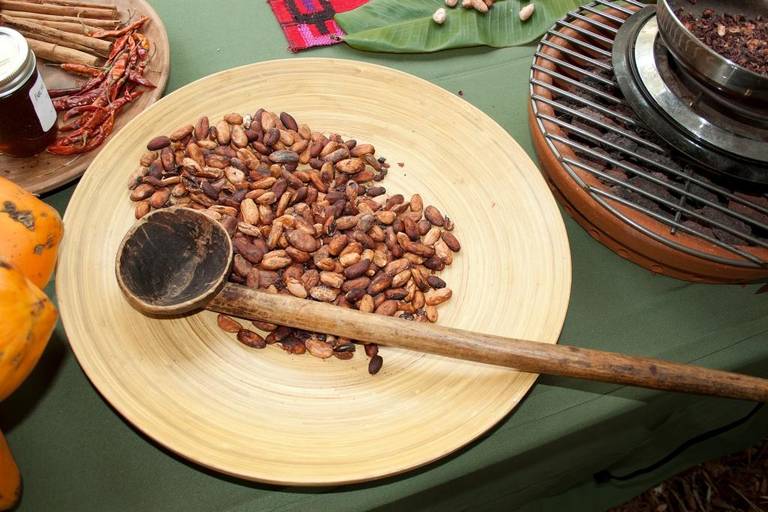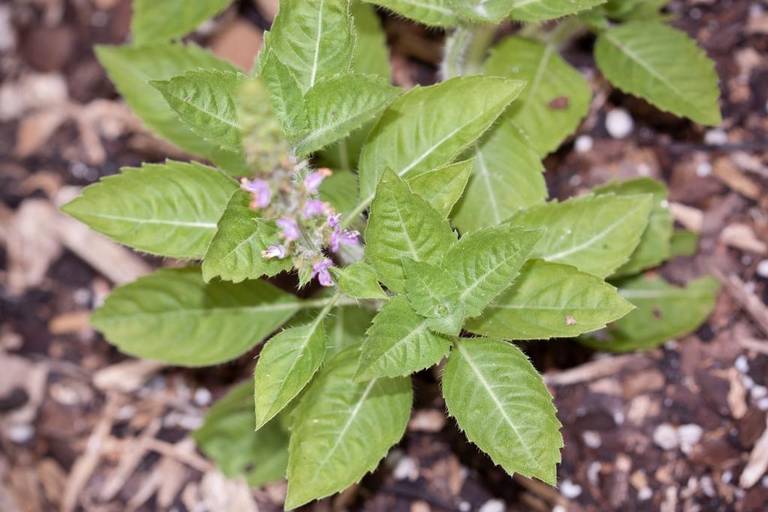Plants Provide Chocolate for All the Senses

Here in South Florida, even outdoors, it is possible to grow the tropical tree from which chocolate derives. But you’ll need an awful lot of cacao trees to harvest enough fruit to actually make chocolate. Don’t despair, though, as there are other botanical opportunities for bringing chocolate into your life.

Oncidium Sharry Baby: The Chocolate-Scented Orchid
A plant enthusiast once told me, “Hey, check out this orchid. It smells just like chocolate.” The orchid’s flowers were a rich, deep maraschino cherry red. I thought the flowers would fail to impress, like most similar promises, but wow, they really did smell like good chocolate.
The orchid was the hybrid Oncidium Sharry Baby. It prefers low to medium light, so a covered eastern- or southern-facing patio or windowsill is ideal. High humidity keeps it happy, not a problem outdoors, but if it’s a houseplant, you may need to increase the Oncidium’s humidity. Splashing water, especially cold if it’s cold, on the leaves can cause damage that may lead to black spotting, so water carefully.
Growing Chocolate Mint
Growing mint is sometimes thought of as opening the door to an uninvited guest who brings friends — it can take over. I haven’t personally had that problem, and kept in pots, mint is very pretty and well behaved. There’s a Mentha piperata variety called “Chocolate mint” (sometimes other names) that, while not just like chocolate, has a taste and smell reminiscent of those little foil-wrapped chocolate mints your grandma always had on the coffee table.

This perennial likes bright shade and sun for optimum taste and smell, and thrives in damp soil. Harvest the leaves at midday when the oils are their strongest and use in tea or to flavor anything you like. Pinch it back liberally to encourage bushy growth.
The Chocolate Daisy: Berlandier lyrata
Berlandiera lyrata is called the chocolate daisy for a reason: its foliage smells like chocolate. The bright yellow daisy-like flowers with deep burgundy-brown centers sweeten the deal. Chocolate daisy is a compact plant that grows to about a foot in height, native to the southeastern United States, and does well in rocky, sandy soil. However, it requires very good drainage in order to avoid root rot, so you’ll need to keep it in a pot with a sandy cactus potting medium.
The Theobroma cacao Tree in South Florida
And, of course, you can grow the real thing. Theobroma cacao originated in the upper Amazon Basin, but can thrive in our own little version of the tropics. Here at Fairchild, the cacao tree outdoors in our Rainforest Exhibit is fruiting profusely. To my eyes, it looks as healthy as the examples growing in the plant conservatory. A shady corner of your yard would be a good place to provide a cacao tree with protection from the harsh sun and cool, drying winds of winter common in that South Florida (though rarely as of late).
Cacao fruit grows directly from the trunk and larger, woody limbs, into wrinkled yellow-orange woody pods reaching six or more inches in length. They age to a chocolate brown, appropriately. Upon opening a cacao pod, you find a white pulp surrounds the large seeds. The seeds, when roasted, ground and mixed with sugar, yield cacao, the key ingredient of chocolate. When simply roasted and hulled, they can be eaten as cacao nibs.
While it might take a whole lot of work to produce chocolate, cacao trees are nevertheless inherently beautiful, with large, glossy green leaves so redolent of the tropics, plus there are always the bragging rights that come with growing a chocolate tree.
At Fairchild’s upcoming Chocolate Festival, you can learn about the challenges of growing cacao and how to overcome them, as well as just about every other aspect of cultivating, creating and cooking with chocolate. Both cacao trees and chocolate-scented Oncidium Sharry Baby orchids will be for sale. Explore everything chocolate at Fairchild Jan. 22-24, 2016.
This article was written by Kenneth Setzer and originally published in the Miami Herald on 1/13/16. Minor changes from the print version of this article were introduced to improve readability in a digital format.
